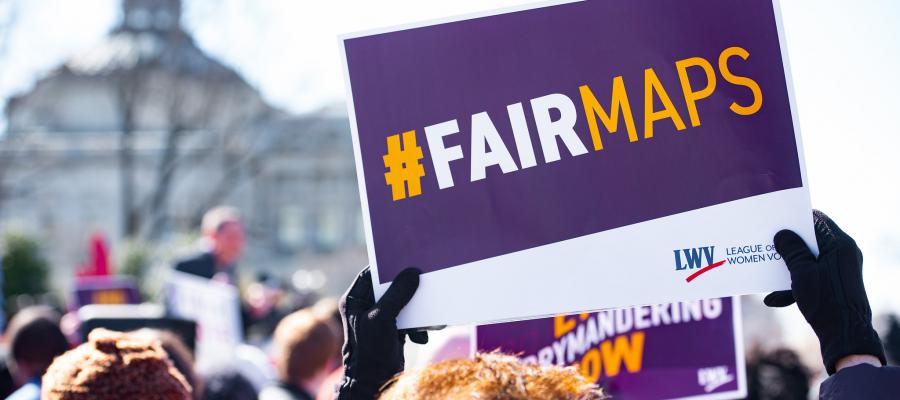Non-partisan Mapmakers Offer Best Hope for Fair Elections
Although new Congressional and state legislative district boundaries are mostly set for this year’s elections, the redistricting process for local elections continues.
Common Cause, a nonprofit that has taken a leadership role in trying to de-politicize the process of dividing changing populations into equal-size political districts, hosted a press briefing on March 8 on the promise and problems facing current local redistricting.
“All politics is local,” said Suzanne Almeida, Common Cause Redistricting and Representation Counsel, “and voters across the country are showing that they won’t accept the gerrymandering of district maps to win an election, whether it’s for city council or congress.”
From the beginning of the United States, that map-drawing has been highly politicized, as incumbent elected officials invariably try to skew new maps in ways that will keep them in power.
“Local level elections are often part of the pipeline for candidates, the first step in party recruitment,” Almeida noted. “Some of the most divisive social issues of the time are debated at school board or local city councils.
“We’ve gotten a lot of attention on the congressional maps, the state legislative maps, but local redistricting also matters.”
To better deliver on the Constitution’s guarantee of equal representation for all voters, Common Cause has pioneered the creation of non-partisan, independent redistricting commissions to produce voting district maps that provide a fairer playing field for competing interests.
In 2008, California became the first state to form such a commission. More than a dozen other states have now followed suit, albeit with varying levels of independence.
In California, more than 17.5 million people are served by more than 60 local independent redistricting commissions that operate at the city and county level, said José Del Rio III, California Common Cause’s Money in Politics Program Manager.
Los Angeles County’s commission alone, he said, held dozens of public hearings, giving thousands of people a view of the process and a platform to make presentations and submit comments, often in languages other than English.
“We’ve seen here in California, line drawers, free of political considerations, can focus on what matters.”
But even in California, cities without such commissions, he said, too often ignored public input and even laws on the books intended to make the process more inclusive.
In Maryland, said Joanne Antoine, Common Cause Maryland Executive Director, “at the local level, we’ve found the process of redrawing our council and local commission districts plagued with political issues that made it near impossible for Marylanders to engage in a meaningful, engaged manner.”
Some redistricting disputes are working their way through the courts, she noted. “We have come a long way, but more work will be necessary to ensure that local jurisdictions in Maryland get it right the first time rather than requiring court intervention.”
Despite increasing diversity in Baltimore County, it wasn’t until 2001 that a non-white person was elected to serve on council, which even now has only one majority black district for an overall population that is 32% Black, and nearly 48% of color.
“Demographic changes are not reflected in the maps,” Antoine said. “It is near-impossible for non-white candidates to get elected in the other six districts.”
In the current redistricting process, although many map proposals were submitted, the council chose to ignore the pleas from their constituents, she said.
Julia Vaughn, Common Cause Indiana Executive Director, noted how in her state, she’s seen super majorities of Republicans in the state legislature and Democrats in Indianapolis’s Marion County council both ignore public input on new district maps, instead doing the work “behind closed doors” to ensure their own re-election — choosing their voters, instead of the other way around.
“Partisan gerrymandering is an underlying cause of several significant problems in our state, including low voter turnout caused by districts drawn to be safe,” she said. “Indiana ranked in 2020 46th for voter turnout among the 50 states.
“We also know that it’s a root cause of the polarized general assembly that spends its time conducting ideological crusades instead to address the concerns of average Hoosiers.”
But independent commissions are on the ground in Bloomington and Monroe, and proposed for Goshen, she said.
“There is no one-size-fits-all answer,” Almeida said. But “one-person-one-vote applies regardless. Different localities deal with that differently. Some have not been redistricted for decades.”
“One of the challenges with local redistricting, sometimes even the people in charge don’t understand the rules or process or what or how it’s supposed to happen … city clerks, staff of those elected officials who are really driving the process … it’s a challenge across the country.”
And, she said, “Rules vary about when challenges can be brought, except under the Voting Rights Act.” Regretfully, she noted, “Sometimes it’s more impactful if you wait for the bad thing to happen first.”




